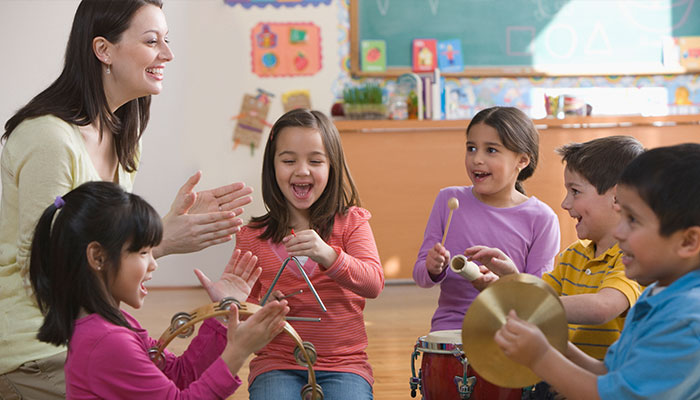While we believe that the books and resources recommended may be of value to you, keep in mind that these are suggestions only and you must do your own due diligence to determine whether the materials are appropriate and suitable for your use. PNC has no sponsorship or endorsement agreement with the authors or publishers of the materials listed.
ELEMENT OF ART

Music Explorers: Percussion
Children will explore instruments and sound through observation and sort percussion instruments by how they produce sound.

Lesson Objective
Children will explore instruments and sound through observation and sort percussion instruments by how they produce sound.
Art
What You'll Need
- Video – Music Explorers: Percussion
- Various classroom percussion instruments:
- Striking: triangle, drums
- Shaking: maracas, egg shakers, bells
- Scraping: rhythm sticks, sand paper blocks, guiro/gourd
- Alternative: Pictures of various percussion instruments
What To Do
- Explain that we will be exploring different instruments and how they make sound.
- As a class, watch the Music Explorers: Percussion video, pausing at appropriate times to allow children to answer questions and participate when prompted.
- Review how different percussion instruments make sound (by striking, shaking, or scraping) with the hand motions.
- Ask children if they can name an instrument that you strike to make sound (drum)? That you shake to make sound (maracas)? And that you scrape to make sound (gourd)?
- Pass out classroom percussion instruments (or pictures of instruments if you do not have a classroom set). Ask children to experiment and figure out how to play their instrument.
- Tell children that together you will sort the instruments by how they make sound. Have children with striking instruments move to one corner of the room, children with shaking instruments at another corner, and children with scraping instruments move to a third corner of the room.
- Now find out if you sorted correctly. Ask children in each group to show their instruments one at a time and demonstrate how to play it. If you are using pictures, have children demonstrate using the hand motions. Let children check that they are in the right group and correct their answer if needed. (see Guiding Student Inquiry)
- Come back to the middle of the room and redistribute instruments. Repeat steps 6 and 7 to sort instruments again.
Resources
Home School Resources
Home educators: use these printable lesson PDFs to teach this lesson to your home schoolers. They're available in English and Spanish.
Content Provided By
Common Core State Standards Initiative – These lessons are aligned with the Common Core State Standards ("CCSS"). The CCSS provide a consistent, clear understanding of the concepts and skills children are expected to learn and guide teachers to provide their students with opportunities to gain these important skills and foundational knowledge [1]. Visit the CCSS


